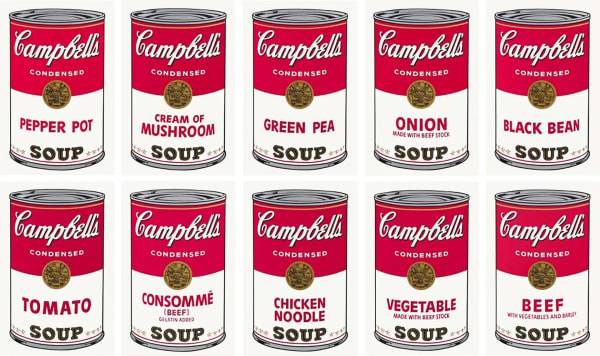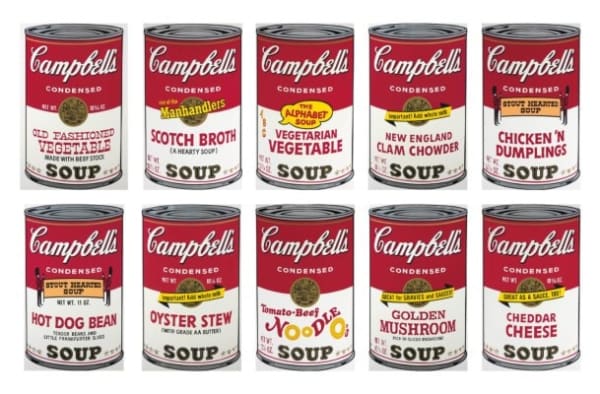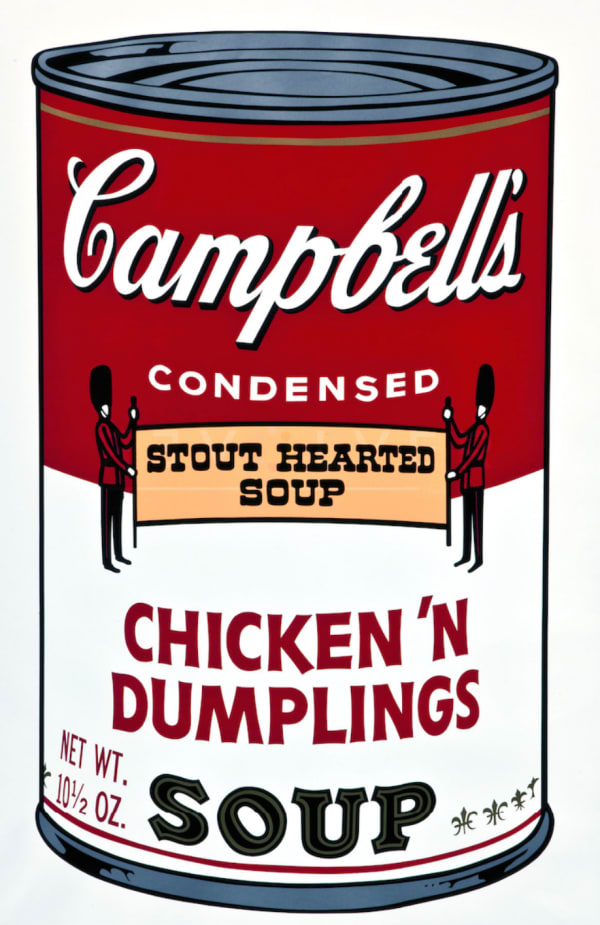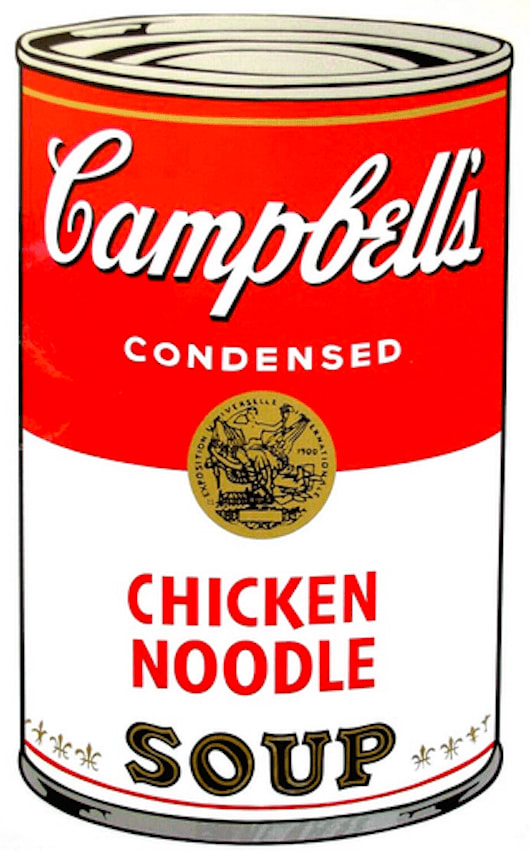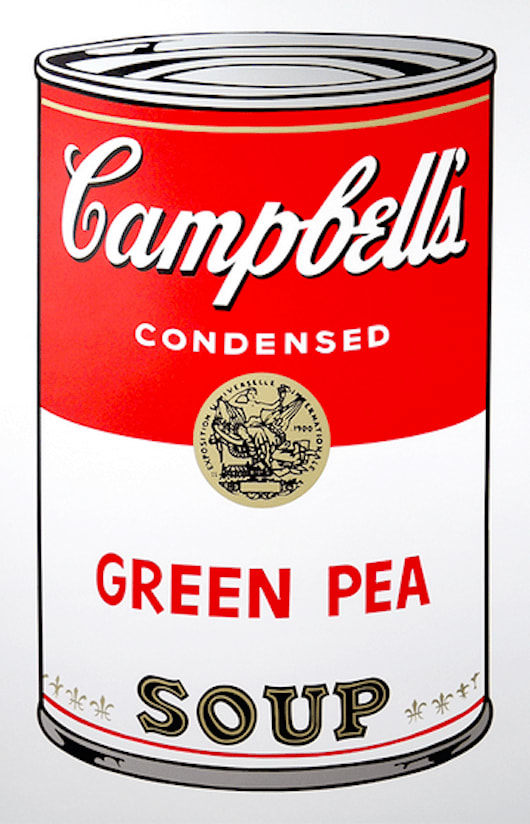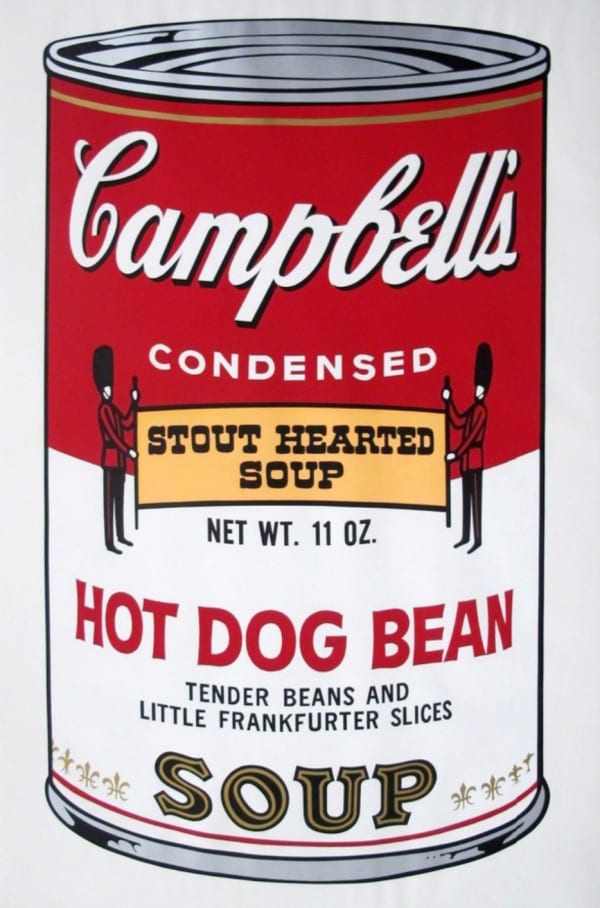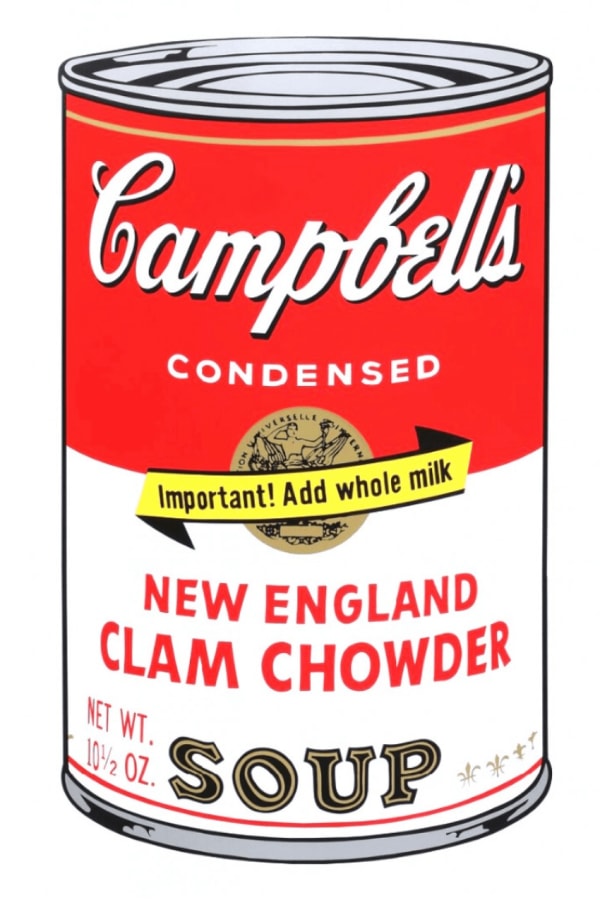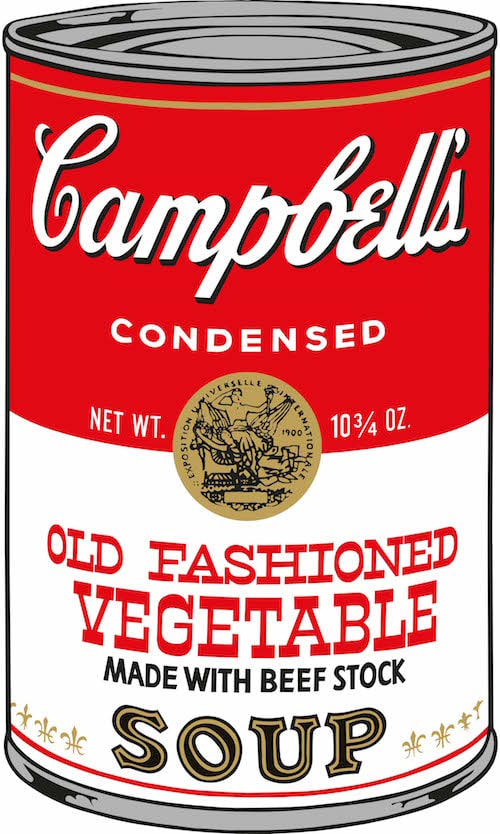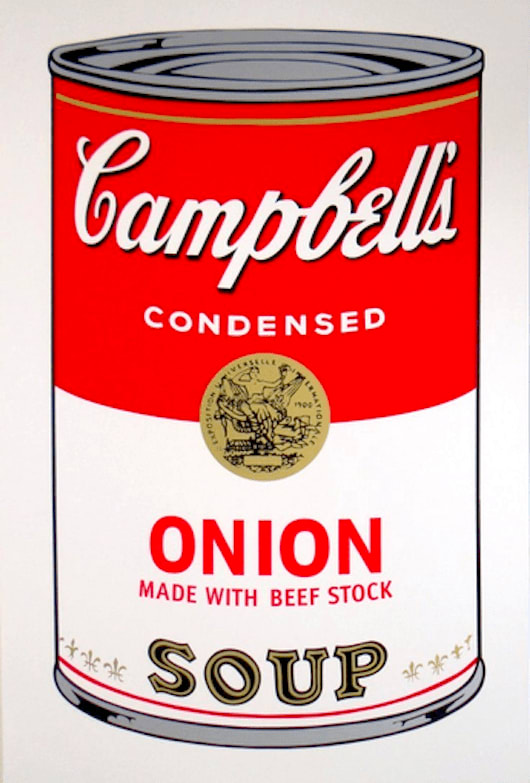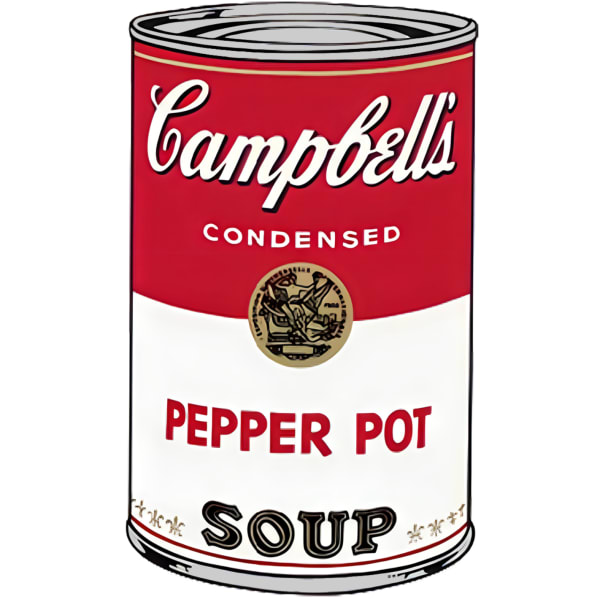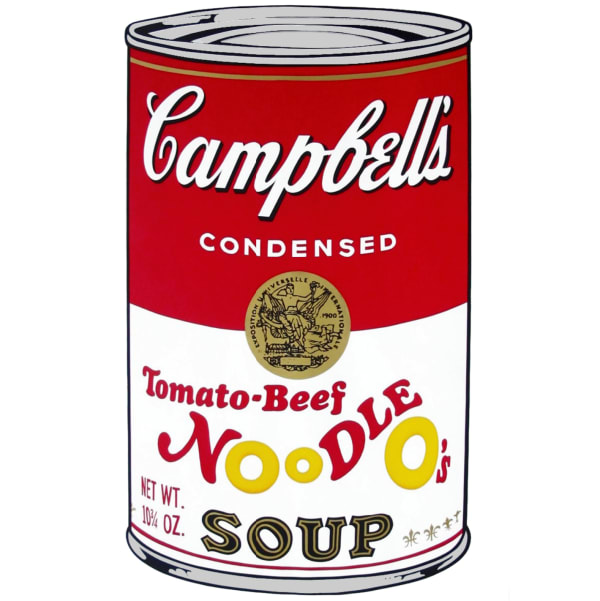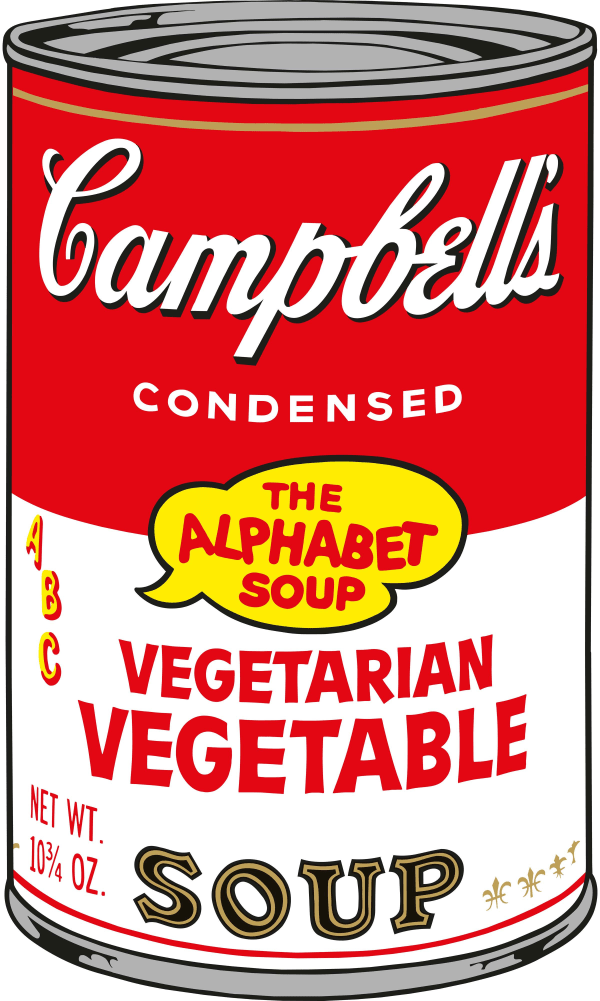-
Artworks
 Andy Warhol, Tomato F.S. II 46
Andy Warhol, Tomato F.S. II 46
Andy Warhol
Tomato Soup F.S. II 46 From Soup Cans Portfolio I, 1968Screen print
Signed in ball-point pen and numbered with a rubber stamp on verso35 x 23 in
88.9 x 58.4 cmEdition of 250 plus 26 lettered APSeries: Campbell's Soup ICopyright The ArtistAndy Warhol’s Tomato Soup (FS.II 46) screen print is more than a vibrant Pop Art image—it is one of the most defining visual icons of the 20th century. Since its...Andy Warhol’s Tomato Soup (FS.II 46) screen print is more than a vibrant Pop Art image—it is one of the most defining visual icons of the 20th century. Since its creation in 1968, as part of the artist’s celebrated Campbell’s Soup series, the Tomato Soup print has not only become a cornerstone of Warhol’s legacy but also a highly sought-after piece among art collectors and investors. Its value lies not just in rarity and artistic merit, but in the profound cultural impact it continues to have across generations.
When Warhol first exhibited his Campbell’s Soup Cans in 1962—each canvas featuring a different flavor of the popular American soup—it was a radical move. At the time, art was dominated by Abstract Expressionism, which emphasized emotional depth and spontaneous gesture. Warhol’s clean, commercial, and repetitive depiction of mass-produced consumer goods upended conventional ideas about what art could and should be.
The Tomato Soup image quickly became the most recognizable of the series. In part, this was due to its visual simplicity and bold contrast. But more importantly, tomato soup was one of the most common and beloved household items in America—affordable, familiar, and dependable. Warhol once said he had Campbell’s soup for lunch “every day for twenty years.” This mundane admission became a central concept in his art: repetition, consumerism, and the commodification of daily life.
By elevating an everyday object to the status of fine art, Warhol forced audiences to confront the growing dominance of brand culture and advertising in American life. Tomato Soup wasn’t just art—it was a mirror held up to society, revealing the emergence of the supermarket as a cultural arena and the brand logo as a form of modern iconography.
The cultural impact of Warhol’s Tomato Soup cannot be overstated. It has transcended its status as a work of art to become a global symbol of Pop Art, of the 1960s, and of the blurring lines between commercialism and creativity. Its influence extends far beyond galleries and museums—it appears in film, fashion, advertising, and education as a shorthand for modernism and rebellion against tradition.
Warhol’s soup cans also served as a declaration that culture was no longer top-down. Anyone could be famous. Anything could be art. By choosing the tomato soup label—printed, uniform, and mass-produced—Warhol predicted the rise of a society where image and brand are as important as substance. In today's world of digital repetition, influencer branding, and viral marketing, his work feels more prescient than ever.
Alongside its cultural impact, Warhol’s Tomato Soup (FS.II 46) screen print has become a blue-chip asset in the contemporary art market. As a limited-edition screen print created in 1968, FS.II 46 was produced during a time when Warhol was refining his signature silkscreen technique and rising to global fame.
Over the decades, the value of these prints has appreciated significantly. Auction houses such as Christie’s and Sotheby’s have repeatedly sold Warhol soup prints for substantial sums, often reaching hundreds of thousands—and in some cases, millions—depending on condition, provenance, and edition number.
Collectors are drawn to the piece not only because of its aesthetics or recognizability, but because it represents a pivotal moment in modern art history. It is, quite literally, a piece of the Pop Art revolution. And with Warhol’s market continuing to perform strongly across categories, Tomato Soup stands out as a reliable and prestigious long-term investment.
Warhol’s soup can prints were not a celebration of branding in the conventional sense, nor a cynical critique. Rather, they were something more nuanced: a meditation on how image and repetition shape meaning. Just as religious icons once adorned cathedral walls, consumer icons now populate billboards and Instagram feeds. In many ways, Tomato Soup anticipates today’s visual culture—where images are infinitely reproducible and carry layers of symbolic weight.
This conceptual depth enhances the print’s value for collectors. It is not merely decorative; it is rich with implications. Tomato Soup embodies the contradictions that define modern life: art and advertising, uniqueness and replication, the personal and the mass-produced.
One of the unique strengths of Warhol’s Tomato Soup is its universal appeal. Whether displayed in a contemporary loft, a private art collection, or a major museum like The Museum of Modern Art, the piece resonates across audiences. It is simultaneously nostalgic and forward-looking, playful and serious.
Its bold, clean lines and recognizable format make it instantly accessible—even to those unfamiliar with Pop Art or Warhol himself. Yet, for seasoned collectors, it holds an intellectual and cultural weight that deepens its importance.
Andy Warhol’s Tomato Soup (FS.II 46) is more than a print—it is a symbol of a moment when art caught up with culture and declared that anything—yes, even soup—could hold meaning. As a cultural masterpiece, it embodies the spirit of the 1960s while remaining strikingly relevant in today's image-saturated, brand-obsessed society.
As an investment, the print represents stability, growth, and prestige. It allows collectors to own not just a work of art, but a vital piece of visual and cultural history. Warhol’s genius was in seeing what others overlooked—and in doing so, he changed the course of modern art forever.
For more information on Andy Warhol's Tomato Soup (FS.II 46) or sale or to buy Tomato Soup (FS.II 46) contact our galleries using the form below.
%3Cdiv%20class%3D%22artist%22%3EAndy%20Warhol%3C/div%3E%3Cdiv%20class%3D%22title_and_year%22%3E%3Cspan%20class%3D%22title_and_year_title%22%3ETomato%20Soup%20F.S.%20II%2046%20From%20Soup%20Cans%20Portfolio%20I%3C/span%3E%2C%20%3Cspan%20class%3D%22title_and_year_year%22%3E1968%3C/span%3E%3C/div%3E%3Cdiv%20class%3D%22medium%22%3EScreen%20print%3Cbr/%3E%0ASigned%20in%20ball-point%20pen%20and%20numbered%20with%20a%20rubber%20stamp%20on%20verso%3C/div%3E%3Cdiv%20class%3D%22dimensions%22%3E35%20x%2023%20in%3Cbr/%3E%0A88.9%20x%2058.4%20cm%3C/div%3E%3Cdiv%20class%3D%22edition_details%22%3EEdition%20of%20250%20plus%2026%20lettered%20AP%3C/div%3E%3Cdiv%20class%3D%22series%22%3E%3Cspan%20class%3D%22artwork_caption_prefix%22%3ESeries%3A%3C/span%3E%20Campbell%27s%20Soup%20I%3C/div%3E1of 6Related artworks-
 Andy WarholBeef Soup F.S. II 49 , 1968
Andy WarholBeef Soup F.S. II 49 , 1968 -
 Andy WarholBlack Bean Soup F.S. II 44, 1968
Andy WarholBlack Bean Soup F.S. II 44, 1968 -
 Andy WarholCampbell's Soup Can Tomato Soup, 1985
Andy WarholCampbell's Soup Can Tomato Soup, 1985 -
 Andy WarholCampbell's Soup I F.S. II 44 - 53 (Complete Portfolio), 1968
Andy WarholCampbell's Soup I F.S. II 44 - 53 (Complete Portfolio), 1968 -
 Andy WarholCampbell's Soup II F.S. II 54 - 63, 1969
Andy WarholCampbell's Soup II F.S. II 54 - 63, 1969 -
 Andy WarholCheddar Cheese Soup F.S. II 63, 1969
Andy WarholCheddar Cheese Soup F.S. II 63, 1969 -
 Andy WarholChicken N Dumplings Soup F.S. II 58, 1969
Andy WarholChicken N Dumplings Soup F.S. II 58, 1969 -
 Andy WarholChicken Noodle Soup F.S. II 45, 1968
Andy WarholChicken Noodle Soup F.S. II 45, 1968 -
 Andy WarholConsommé Beef Soup F.S. II 52, from Campbell's Soup I, 1968
Andy WarholConsommé Beef Soup F.S. II 52, from Campbell's Soup I, 1968 -
 Andy WarholCream of Mushroom Soup F.S. II 53, 1968
Andy WarholCream of Mushroom Soup F.S. II 53, 1968 -
 Andy WarholGolden Mushroom Soup F.S. II 62, 1969
Andy WarholGolden Mushroom Soup F.S. II 62, 1969 -
 Andy WarholGreen Pea Soup F.S. II 50, 1968
Andy WarholGreen Pea Soup F.S. II 50, 1968 -
 Andy WarholHot Dog Bean Soup F.S. II 59, 1969
Andy WarholHot Dog Bean Soup F.S. II 59, 1969 -
 Andy WarholNew England Clam Chowder Soup F.S. II 57, 1969
Andy WarholNew England Clam Chowder Soup F.S. II 57, 1969 -
 Andy WarholOld Fashioned Vegetable Soup F.S. II 54, 1969
Andy WarholOld Fashioned Vegetable Soup F.S. II 54, 1969 -
 Andy WarholOnion Soup F.S. II 47, 1968
Andy WarholOnion Soup F.S. II 47, 1968 -
 Andy WarholOyster Stew Soup F.S. II 60, 1969
Andy WarholOyster Stew Soup F.S. II 60, 1969 -
 Andy WarholPepper Pot Soup F.S. II 51, 1968
Andy WarholPepper Pot Soup F.S. II 51, 1968 -
 Andy WarholScotch Broth Soup F.S. II 55, 1969
Andy WarholScotch Broth Soup F.S. II 55, 1969 -
 Andy WarholTomato Beef Noodle O's Soup, F.S. II 61, from Campbell's Soup II, 1969
Andy WarholTomato Beef Noodle O's Soup, F.S. II 61, from Campbell's Soup II, 1969 -
 Andy WarholVegetable Soup F.S. II 48, 1968
Andy WarholVegetable Soup F.S. II 48, 1968 -
 Andy WarholVegetarian Vegetable Soup F.S. II 56, 1969
Andy WarholVegetarian Vegetable Soup F.S. II 56, 1969 -
 Roy LichtensteinTwo Nudes (C. 284) , 1994
Roy LichtensteinTwo Nudes (C. 284) , 1994 -
 Roy LichtensteinCrying Girl (C. II 1), 1963
Roy LichtensteinCrying Girl (C. II 1), 1963 -
 Roy LichtensteinReverie (C. 38), 1965
Roy LichtensteinReverie (C. 38), 1965
-
Join our mailing list
* denotes required fields
We will process the personal data you have supplied in accordance with our privacy policy (available on request). You can unsubscribe or change your preferences at any time by clicking the link in our emails.
This website uses cookies
This site uses cookies to help make it more useful to you. Find out more about cookies.




